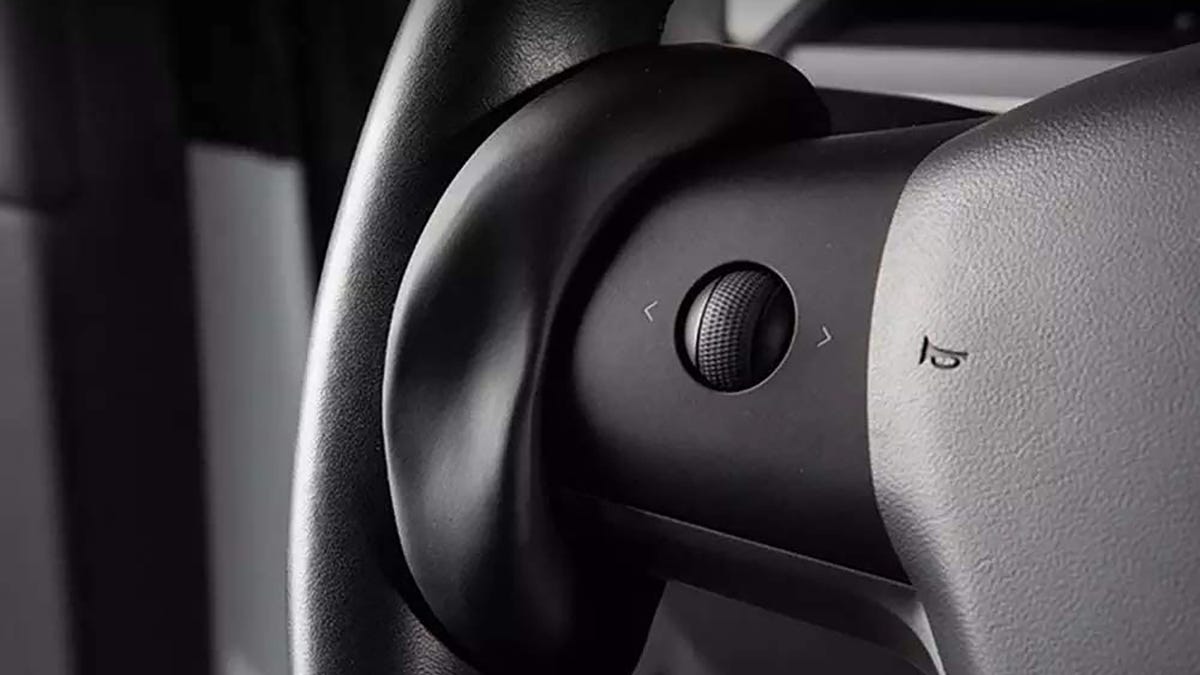Amazon still sells versions of the dangerous Autopilot Buddy Tesla accessory
It's been two years since we first talked about this, and nothing's changed. Devices that fool Tesla's safety systems are seriously dangerous.

Yep, you can still buy this. For some reason.
In May of 2018, we wrote about the incredibly dangerous Autopilot Buddy accessory Tesla drivers use to skirt around hands-off-the-wheel warnings. It's been two years, and we're back with an update: It's still on sale, and Amazon sells the reckless accessory cheaper than ever.
People have been doing dumb things in conjunction with Tesla's Autopilot driver-assist system since its inception, but Autopilot Buddy takes things a step further. It's a small, weighted device that provides enough torque on the steering wheel to reduce the number of warnings from the vehicle regarding hands-off operation when Autopilot is activated. It's formed to blend in with the wheel on a Tesla Model S, Model X, Model 3 and Model Y, and it clips to either side of the wheel using a two-part design connected with magnets.
The original Autopilot Buddy is still available, though only outside the US. Per the website: "Autosteer was first released to Telsa [sic] owners in Oct 2015. Since that time 'updates' has [sic] slowly diminished the duration we can enjoy 'autopilot' in our cars," the website reads. "Reduced from thirty minutes to less than three minutes between nagging reminders; This [sic] left many owners upset." The site did add a little note of warning: "This is not intended to be a hands-off device; your hands must remain on the wheel as directed by Tesla's terms of 'Autosteer' user agreement."
This OG accessory now costs $280. It used to cost $180. But Amazon will sell you a knock-off unit for just $87. And there's a $5 coupon available.
$86 for something that looks like a melted Fitbit and increases your chances of being hurt behind the wheel. Yeah... no.
While the Amazon sellers, and apparently some owners, view the hands-off warnings as an impediment, they're actually there for a good reason. Tesla's Autopilot is merely an assist to a human driver. It is not an autonomous system meant to replace the driver at any time, just to reduce the tedium of long, traffic-laden commutes. Tesla's website is firm about this, and when drivers in the past have abused Autopilot beyond its intended purpose, terrible things have happened.
Tesla's own Autopilot page used to tout "full self-driving hardware," though that's since been removed. However, that hasn't stopped the company from running with similar language to tout its optional $10,000 "Full Self-Driving" beta. Neither Autopilot, nor FSD, actually possess the capability for Level 4 autonomous driving and no self-driving cars exist today.
Nevertheless, the makers of Autopilot Buddy and the latest knockoffs clearly think they know better than Tesla's own engineers and safety wonks, and that alone is enough to suggest that this product has zero regard for a driver's safety while operating advanced driver-assist systems.
When reached for comment by Roadshow in 2018, Tesla wouldn't comment on the device, or reveal whether or not it will consider taking action against the makers of Autopilot Buddy. Since then, Tesla scrapped its public relations department, leaving us no way to contact the automaker. Amazon did not return Roadshow's request for comment.
It's worth noting that this sort of hack isn't limited to Tesla, either. Many vehicles with steering assist rely on steering wheel torque to ensure a driver has their hands on the wheel during operation, and there have been videos of idiots cheating the system using all sorts of items, even oranges.
Unlike Tesla's Autopilot, Cadillac's Super Cruise's more sophisticated hardware permits hands-off use, but it uses a camera to monitor the driver's face to ensure they're paying attention to the road during that time, and it has capacitive touch sensors built into the steering wheel for added safety. According to a past report from The Wall Street Journal, Tesla considered steering wheel sensors and eye tracking to help beef up Autopilot's anti-abuse defenses, but those add-ons were reportedly cast aside over cost and effectiveness concerns. Elon Musk then tweeted that the eye-tracking system was rejected due to a lack of effectiveness. Those failsafes would render the Autopilot Buddy useless.
In the meantime, the federal government opened an investigation into Autopilot crashes and senators are starting to clamor for a Federal Trade Commission investigation into Tesla for overstating the capabilities of the company's systems.
To sum it up, if you're thinking about pushing an automaker's tech beyond its intended use, do everyone on the road a favor and don't.



